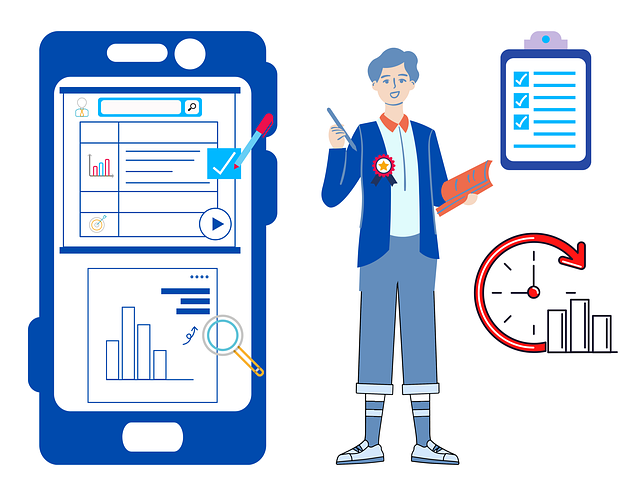In today's digital age, AI and ML revolutionize restaurant operations, particularly through AI energy efficiency audits. These audits analyze comprehensive data from kitchen equipment, lighting, HVAC, and customer behavior to predict and reduce energy consumption. The process involves gathering raw data, cleaning it, training AI models with supervised learning, testing, and refining for high accuracy in identifying inefficiencies. Implementing AI-driven solutions like smart thermostats and predictive maintenance significantly reduces utility costs, enhances operational efficiency, and minimizes environmental impact.
In today’s competitive landscape, Artificial Intelligence (AI) and Machine Learning (ML) are revolutionizing the way businesses optimize operations. This article explores how AI can drive significant energy efficiency improvements in restaurants through intelligent audits. We delve into the development process of an AI business model tailored for restaurant energy audits, highlighting key steps from understanding AI/ML fundamentals to implementation and optimization strategies. By leveraging these advanced technologies, restaurateurs can achieve substantial cost savings and contribute to a greener future.
- Understanding AI and Machine Learning for Energy Efficiency in Restaurants
- Development Process of an AI Business Model for Energy Audit
- Implementing and Optimizing AI-Driven Energy Efficiency Solutions
Understanding AI and Machine Learning for Energy Efficiency in Restaurants

In today’s digital era, restaurants are increasingly leveraging Artificial Intelligence (AI) and Machine Learning (ML) to enhance operational efficiency, including energy management. AI energy efficiency audits for restaurants involve sophisticated algorithms that analyze vast datasets from various systems within a culinary establishment. These range from kitchen equipment usage to lighting, HVAC (Heating, Ventilation, and Air Conditioning), and even customer behavior patterns. By understanding these patterns, ML models can predict energy consumption trends and identify areas where energy wastage occurs.
Through this data-driven approach, restaurant owners gain actionable insights into optimizing their operations for better energy efficiency. For instance, AI algorithms might suggest the most energy-efficient cooking techniques, recommend timing for equipment maintenance to minimize downtime, or even predict peak customer hours to optimize staffing and resource allocation. Implementing these recommendations can lead to significant cost savings on utility bills while also contributing to a greener environmental footprint.
Development Process of an AI Business Model for Energy Audit

The development process of an AI business model for energy audit, specifically tailored for restaurants, involves several key steps. It begins with data collection, where extensive energy consumption data is gathered from various sources within the restaurant, such as heating, ventilation, air conditioning (HVAC) systems, lighting, and kitchen appliances. This raw data is then meticulously cleaned, structured, and labeled to ensure it’s suitable for machine learning algorithms.
Once the data is prepared, engineers and data scientists employ advanced techniques like supervised learning, where AI models are trained on historical energy usage patterns to learn and predict future trends. These models are then tested, validated, and fine-tuned using new data sets. The goal is to achieve high accuracy in predicting energy inefficiencies and identifying areas for improvement in terms of AI energy efficiency audits for restaurants. This iterative process ensures that the AI model becomes increasingly robust and reliable over time.
Implementing and Optimizing AI-Driven Energy Efficiency Solutions

Implementing AI-driven energy efficiency solutions can significantly transform the way businesses, particularly restaurants, manage their operations and reduce costs. By leveraging machine learning models, these establishments can conduct comprehensive AI energy efficiency audits that identify areas of improvement within their facilities. These audits analyze various data points, such as electricity consumption patterns, equipment usage, and environmental conditions, to pinpoint inefficiencies and provide actionable insights.
Once identified, optimized strategies can be implemented to enhance energy conservation efforts. This includes smart thermostats that adjust temperature settings based on occupancy, automated lighting systems that respond to movement, and predictive maintenance models that ensure equipment is serviced before it fails, reducing unexpected downtime and energy spikes. By continuously refining these AI models with real-world data, restaurants can achieve optimal energy efficiency, contributing to cost savings and a reduced environmental footprint.
The integration of AI and machine learning into energy efficiency practices holds immense potential for the restaurant industry. By understanding these technologies, developing tailored AI business models, and implementing optimized solutions, restaurateurs can significantly reduce energy consumption and operational costs. AI energy efficiency audits enable data-driven decisions, identifying areas for improvement and offering actionable insights. As these solutions evolve, restaurants can stay competitive by embracing innovative ways to enhance sustainability and profitability through intelligent automation.
